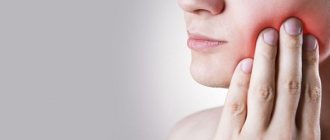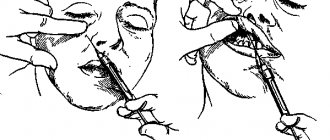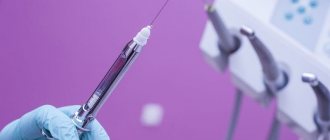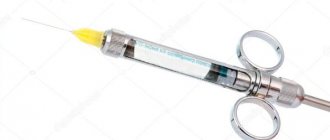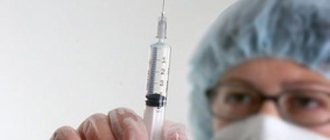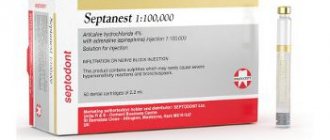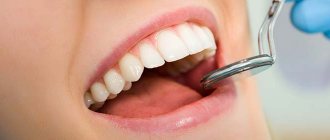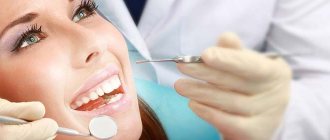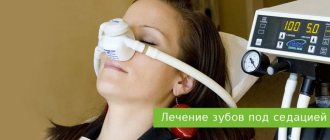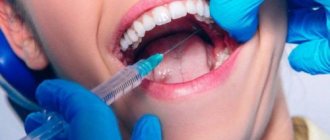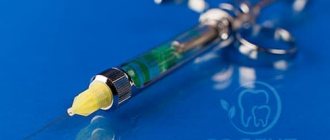November 29, 2021
273
Cosmetology involves performing various procedures that require pain relief. To do this, patients are injected or applied anesthetic drugs. Most solutions used today are non-invasive. In other words, they do not need to be injected under the skin. This is necessary to eliminate any discomfort.
General anesthesia
Anesthesia or general anesthesia is a procedure in which a person is put into a special state - the body does not react to external stimuli, one of which is pain. General anesthesia is performed using anesthetics that act on the central nervous system.
General anesthesia is given if there is a need to perform surgical procedures. The technique has a high level of complexity, so an anesthesiologist accompanies the operation. It calculates the correct dosage for a particular person. The well-being and even the life of the patient depends on it.
As a rule, local anesthesia is often used for aesthetic cosmetology, and anesthesia is done in rare cases, for example, if it is necessary to do deep peeling.
Anesthesia is perceived ambiguously by people. So, some are sure that anesthesia shortens life by several years. There is also a myth that says that drugs of this type make a person mentally ill. However, such statements are incorrect. Of course, risks exist, as in other areas of medicine, but experienced doctors can minimize them. Possible side effects include dizziness, headache, diarrhea, and vomiting.
What else is important?
How well you will feel during the procedure depends not only on the psychotherapeutic abilities of the doctor, but also on the skill of his hands. The professionals themselves admit: the concepts of a light and heavy hand are not fairy tales.
N.V. Markina reveals the details of pain relief for injection procedures: “The strength of pain is determined by the injection technique (for example, the linear-retrograde technique, which is used for contouring, biorevitalization, is more painful than the papular technique characteristic of mesotherapy. — Ed.
.), and - to a large extent!
- composition of the drug. Application anesthesia anesthetizes quite superficially (it does not provide a complete blockade of pain sensitivity, but only weakens it. - Ed.
), and the drug can be, say, a pinching lipolytic, which is injected deep into the subcutaneous fat layer, and can be felt in the tissues very unpleasant." By the way, the injection of botulinum toxin usually does not provide pain relief, since it involves a small number of injections: 5–20 injection points with a duration of exposure of 5–15 minutes. Another thing is multiple injections during mesotherapy, biorevitalization, plasma therapy, SPRS therapy (injections of autologous functionally active fibroblast cells grown in special laboratory conditions). Contour plastic surgery, of course, also relieves pain. And not just by applying cream.
Local anesthesia
Local anesthetic injections are designed to numb the area the doctor is working on. Such pain relief can be:
- Application. Special creams or gels are applied to the skin to help cope with discomfort.
- Infiltration. The medicine is injected under the skin, which blocks nerve impulses.
- Regional. The medication is injected into the area of the nerve trunk, which is responsible for a certain area of the body.
In injection cosmetology, anesthesia is selected taking into account factors such as the area of manipulation and the individual characteristics of the patient.
Application in pediatric dentistry
The technique is popular in pediatric dentistry, as it allows you to completely anesthetize any dental procedure, creating a trusting attitude towards doctors in young patients.
The porous structure of children's primary teeth is especially susceptible to topical anesthesia. The drug easily penetrates tissue, turning off sensitive receptors even in the deep layers of the gums. This allows the method to be used as the main method of pain relief - not only for superficial procedures, but also for the treatment of deep caries of primary teeth.
ATTENTION! In pediatric dentistry, drugs with a low level of toxicity are used. Drugs such as Dicaine are contraindicated for use in patients under 10 years of age.
Effective pain relief with Anesta-A cream
Cosmetologists must carefully select a local anesthetic, and the products used must have registration and permits for use in the Russian Federation. One of the most popular local anesthetics is Anesta-A. This drug is registered and has a certificate, so it can be used in medical clinics, beauty salons, tattoo parlors, etc. The drug is intended for topical anesthesia and is based on lidocaine and its derivatives. Differs from analogues in minimal allergy risks.
Indications for use in dentistry
Application anesthesia is indicated for all patients with increased anxiety to create a favorable mood at the dentist’s appointment. However, the direct purpose of this method is to relieve pain from superficial procedures, such as:
- removal and application of sutures;
- injections (intermediate pain relief reduces any discomfort to zero);
- prosthetics (fitting of crowns and bridges);
- taking impressions (if the gag reflex is pronounced, the anesthetic is applied to the basal area of the tongue);
- procedure for cleaning teeth and removing tartar;
- treatment of periodontal pockets, treatment of periodontitis and gingivitis;
- treatment of uncomplicated caries of superficial and moderate severity;
- any manipulations with increased sensitivity of tooth enamel (preparations are rubbed directly into the tooth enamel and adjacent tissues);
- treatment of pulpitis (for local anesthesia of the inflammatory process, the drug is placed at the bottom of the carious cavity);
- removal of baby teeth or teeth with pathological mobility (for example, with periodontal disease);
- opening of gingival abscesses.
The main contraindication to topical anesthesia is an allergic reaction and hypersensitivity to the drug.
In rare cases, when infiltration anesthesia is strictly contraindicated for a patient, application anesthesia is the only way to somehow reduce pain.
Prevention of anaphylactic shock
Although deaths from anesthetics (or insect bites) account for a minority of the statistics, preventative measures should be taken to reduce the risk of anaphylactic shock.
- Detailed and in-depth analysis of the client’s allergic history, data on drug intolerance; pharmacological history included in the medical documentation.
- Conducting tests to identify the allergen before administering the required dose of anesthetics for patients with a more complex allergic history.
- Assessment of the system of medications that the patient is taking (pharmacotherapy) at the moment.
- Mandatory and constant monitoring of the client throughout the entire time after the introduction of the allergen (especially the first 30 minutes).
- Refusal of immunotherapy for uncontrolled bronchial asthma.
- Arrangement of an office or clinic (emergency medical kit with the presence of adrenaline), and training of all members of the staff in case of drug-induced AS or similar serious conditions of patients.
Even after the active elimination of acute manifestations of anaphylactic shock, there are no favorable and definitive prognoses for the completion of the pathological process. We can talk about a positive prognosis for the patient only after 5-7 days of rehabilitation.
The TOTIS company takes care of its clients and offers drugs for safe contouring and biorevitalization procedures from the Austrian pharmaceutical giant CROMA and the SAYPHA line:
- Saypha Rich (18 mg/ml) is a sterile, purified, transparent, isotonic, biodegradable gel for skin biorevitalization procedures. Provides a long-lasting “anti-age” effect + prolonged hydration.
- Saypha Filler (23 mg/ml) is an intradermal hyaluronic acid filler for the correction of superficial and medium-deep wrinkles, as well as for increasing lip volume.
- Saypha Volume (23 mg/ml) is an intradermal hyaluronic acid filler for correcting deep wrinkles and creating volume in the middle third of the face, as well as voluminous modeling of the lips.
Very soft fillers that are easily and painlessly distributed under the skin and guarantee the most natural result. These products can be combined with each other and not worry about comfortable administration, thanks to the unique CROMA syringe + ultra-thin terumo needle.
The article was written with the information support of a dermatocosmetologist, methodologist of the medical information section of the TOTIS company - Natalia Malichenko
List of anesthetics used
Various substances can be used for surface application. As a rule, the determining factor in choosing a drug is the type of surface and the specifics of the required anesthesia.
The most common painkillers are:
- Chloroethyl. Blocking sensation through exposure to cold eliminates the pain threshold.
- Lidocaine. It is not accompanied by significant complications, but is not recommended during pregnancy and for diseases of the cardiovascular system. Available in spray form, it is effective upon contact with mucous membranes.
- EMLA. A cream used for application pain relief, which is widely popular in cosmetology. The drug consists of lidocaine and less toxic prilocaine. To enhance the effect, a bandage is applied to the drug.
- Perylene-ultra. The basis of the drug is tetracaine, which has a vasodilating effect. Available as a spray as well as a solution. The effect comes very quickly. In dental practice, the product is used for simple procedures.
- Anestol. It has a wide spectrum of action and has a long-lasting effect (up to two hours). Consists of lidocaine, tetracaine and benzocaine.
Reference! A number of medications contain antibiotics that have disinfecting properties.
When choosing any of the above drugs, the doctor conducts a test to rule out allergic reactions.
Also, when choosing, the preferred form of release is taken into account. Funds can be issued in the following forms:
- ointment;
- cream;
- gel;
- spray;
- powder;
- alcohol or aqueous composition;
- lozenge;
- plate.
Advantages and disadvantages of the technique
The main advantages of topical anesthesia:
- Performance. Painkillers used for topical anesthesia have an immediate effect.
- High efficiency. The treated surface loses sensitivity in 99% of cases.
- Safety. An experienced dentist will perform the procedure in such a way that no complications will arise.
The disadvantages of topical anesthesia are mainly related to the specifics of the procedure:
- The substance penetrates shallowly. Its area of influence is limited to the upper layers of the epithelium and tooth enamel.
- It is quite difficult to control the exact dosage of the drug.
- Small concentrations of anesthetic enter the blood.
- Painkillers have a vasodilating effect. Therefore, after their action stops, many patients' gums begin to bleed.
- Quite a short period of validity. The maximum duration of the anesthetic effect is 25-30 minutes. This fact limits the scope of application of topical anesthesia. It is impossible to cure deep caries using this delicate technique.
